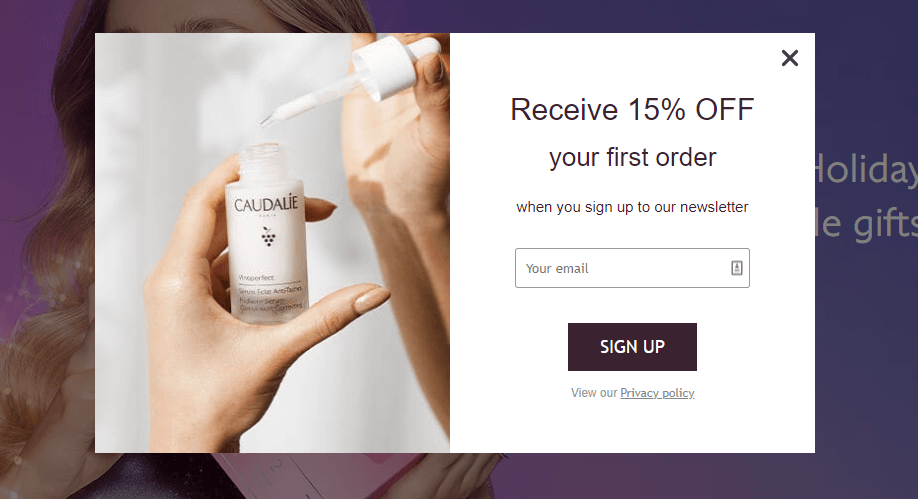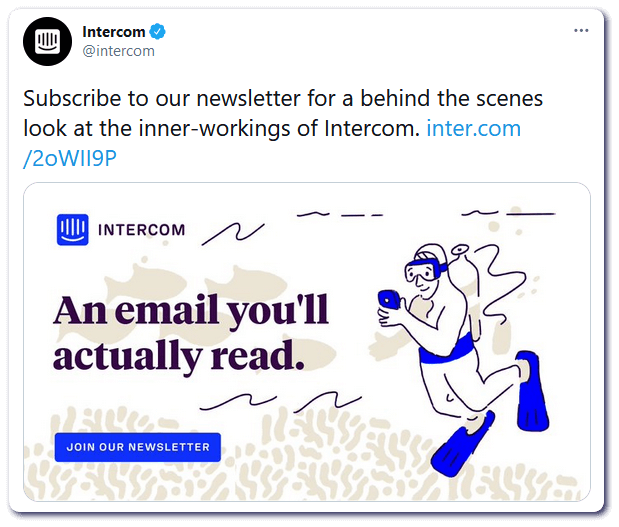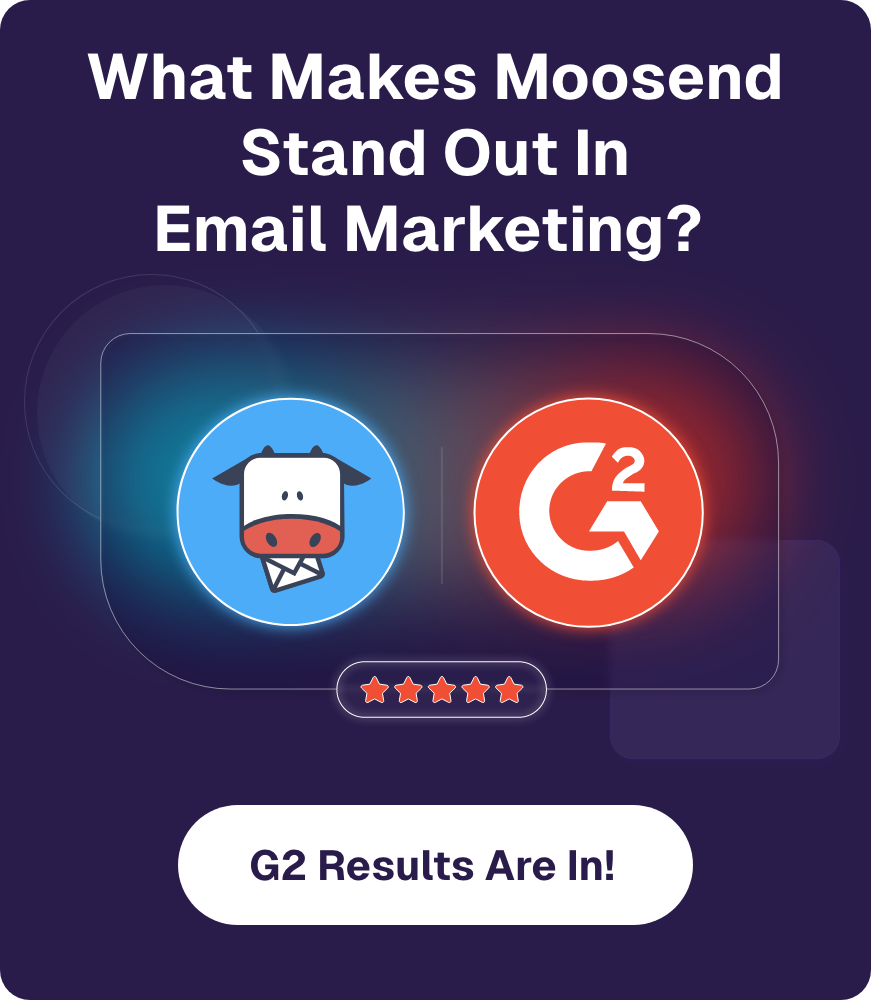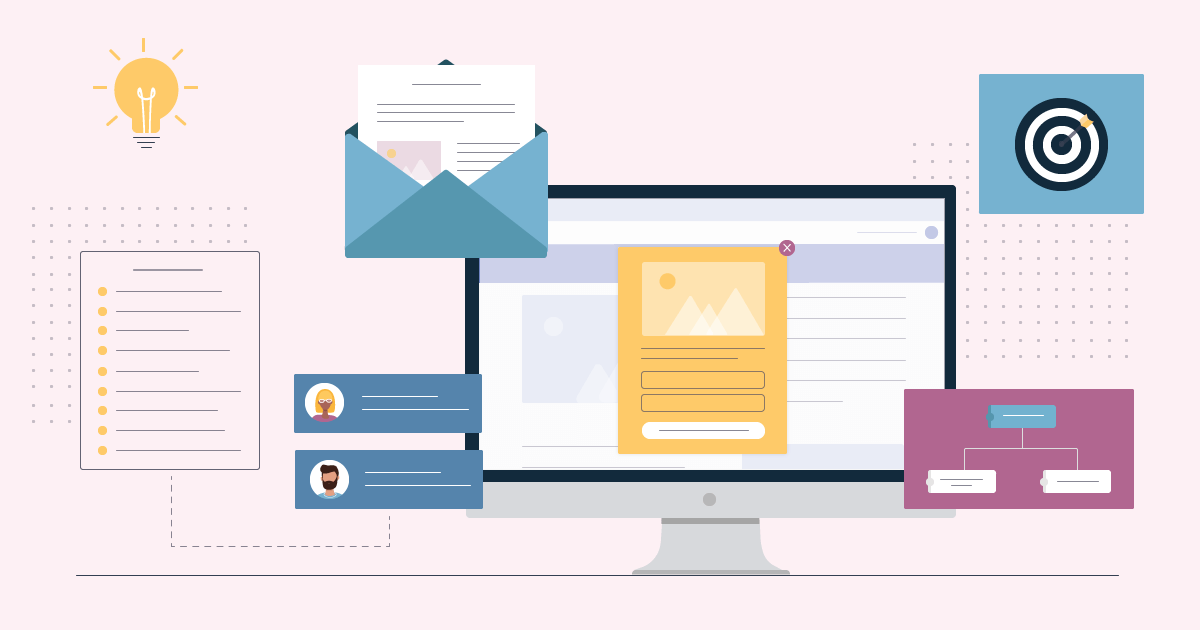
Why Buying Email Lists Is A Bad Idea [+List Building Tips]
You want to kickstart your email marketing strategy and start emailing people as soon as possible, so buying email addresses seems like a good idea. It’s fast, inexpensive and it looks like an ideal shortcut to growth.
But did you know that purchasing email addresses instead of acquiring them organically can have the opposite effect?
Read on to learn:
- why purchasing email addresses should be avoided
- effective tips to build a highly-engaged email list
Ways To Acquire An Email List
Before we delve into the disadvantages of purchasing email addresses, let’s see the two ways for businesses to acquire an email list of contacts.
1. Buy or rent an email list
In this case, you essentially purchase a list of names and email addresses from a list provider. These contact information are sorted out based on demographic or psychographic information.
For example, you may buy a list of 100,000 names and email addresses of individuals that live in Virginia and are married with children. Similarly, you could purchase a list with 50,000 males aged 20-29, based in the US.
The only difference between purchasing and renting is that with renting you rely on the list provider to also send the actual email campaigns. You never actually own or see the email addresses. You simply identify and select a segment that you want to target with your email marketing campaigns.
2. Build your own email list
In this case, people willingly choose to provide you with their contact information either online or in person. Usually, you provide them with something of value (e.g. a PDF, coupon code, etc.) in return for their email address. Sometimes subscribers may select certain types of email content they wish to receive, such as alerts for new blog posts.
Essentially, this act of users voluntarily providing their email addresses is the result of earning the interest and trust of your contacts. Think of it as “the start of a relationship.”
Note: Sometimes when people purchase email addresses, they see things like “this list is 100% opt-in” and other similar phrases. However, these people on the list opted in to receive communication from other businesses and not from you!
Why You Shouldn’t Purchase Email Lists
Now it’s time to solve the mystery of why you should never buy an email list for your business.
1. Most ESPs don’t let you send emails to purchased lists
It might come as a surprise, but most reputable email service providers prohibit users from sending emails to lists they have bought online. Even if you end up importing a list of purchased email addresses into the email marketing software you’re using, soon you’ll get caught and your account could get suspended.
On another note, you may think that using an ESP with a shared IP address will be a good alternative. However, this is not true since you will suffer poor email deliverability. This is because one customer’s “bad” email addresses can harm the deliverability of all other customers.
2. You risk getting flagged as spam
Would you risk getting your email campaigns flagged as spam emails? Or should I say, would you risk your brand becoming a synonym for being annoying?
When subscribers mark your emails as spam too often, email clients like Gmail, Outlook and Yahoo! will start diverting your campaigns to recipients’ spam folders. This means that subscribers won’t be seeing your emails anymore and your open rate will plummet.
What’s even worse is that you send the message that you don’t really care about your audience, just selling your products. People will remember your brand as an “annoying” one and they’ll want no business with you.
The best case scenario is that people won’t recognize your name in their inbox and just flag you as spam. However, if someone had (or would have in the future) any interest in your brand, then you could lose those potential customers since you made a bad impression in the first place.
3. You’ll violate the GDPR rules about consent
While buying email lists is legal, there is the General Data Protection Regulation (GDPR) that’s in place to protect recipients. Under GDPR rules, purchased email lists are simply not compliant.
This is because you must have explicit consent from your contacts to target them with emails. Practically, people need to check the box on your website, form, etc. to opt in to your email marketing messages. Otherwise, explicit consent hasn’t been given. What’s more, users need to be able to unsubscribe from receiving your emails.
Also, even if you don’t live or work in Europe, in case your contacts are in Europe, they are protected from the GDPR rules.
In the US there is the CAN-SPAM Act of 2013. Under this Act, you are prohibited from spamming people who opt out of your emails and sending emails without consent.
So, all in all, law is an integral part of the process of email marketing and marketers need to make sure they are not breaking any applicable laws.
4. You won’t be getting qualified leads
The true power of email marketing comes from sending the right message to the right people. Email blasts may have a certain percentage of effectiveness if you just want to get the message out, but you won’t be seeing good conversion rates. This is also the case with purchased email lists.
A qualified email contact is someone who is familiar with your business. Someone who has the intent to learn more about what you do or wants to buy from you, even if it happens after a long time.
A purchased list of emails cannot give you those qualified leads since the email contacts there have no clue about your business. Can these people be considered “suitable prospects” if they don’t even know about your brand? Of course not!
You might get lucky and convince a few of them, but that’s it. You won’t be getting any more new customers or recurring customers as you would with an organically built email list.
5. Your engagement rates will be terribly low
Let’s begin by saying that user engagement comes after they decide to open an email. So, first, you need to overcome this obstacle, namely people on the purchased email list to open your marketing campaigns.
Engagement can take various forms depending on the email content, such as clicking through to read a blog post, checking out a new product, etc.
Let’s suppose you buy a list with 200,000 “subscribers.” Even if you manage to get 2% of them to click through your email, it would still be better to have a list of 2,000 people who have actively shown an interest in your brand.
Now fear not! Even if buying email addresses is out of the question, here are some effective tips to easily build your own email list fast and without trouble!
5 Tips To Easily Build An Opt-In Email List
Growing your own email list will not only allow you to monitor how your new contacts end up in your list but also check their quality.
To do so, you can follow some simple steps. Let’s take a look at the most important ones below.
#1 Create Valuable Newsletter Sign-up Forms
When your visitors land on your website the best way to convert them into subscribers is to show them a pop-up form after they have spent some time looking around.
To encourage them to give you their contact information is to make the form interesting and valuable enough for them. The best way to do this is through a valuable incentive. If your visitor sees the benefit of giving you their email address, then they will convert.
There is a variety of content you can use depending on your industry.
- eCommerce: discounts, gift guides, coupon codes
- SaaS: whitepapers, checklists, infographics
- Bloggers: ebooks, tips
Based on your audience, you can select the right incentive to motivate them to sign up for your newsletter.
Below, you can see how Caudalie, an eCommerce beauty brand, gives its potential subscribers a 15% discount code.

#2 Create gated content to incentive people to provide their email address
Premium content in the form of ebooks, templates, and webinars is a great way to entice more people to give you their contact information (email, phone number). This gated content can be put on dedicated landing pages or as additional content after users read a blog post.
The more gated assets you create, the more people you’ll be able to put to your email list.
This is an example from our own Moosend blog. After reading the post, users can download this useful premium content to improve their marketing efforts.

#3 Leverage social media
If your business does social media marketing or it has a presence on social media platforms, then it’s imperative that you use this channel to grow your list.
Specifically, you can include a sign-up button on your Facebook page to boost lead generation. Moreover, you could run a social media campaign encouraging your social media followers to join your email newsletter.
Here is an example of how Intercom did this:

Social media can also be used to run ad campaigns, offering users exclusive discounts and coupon codes for users that subscribe to your email marketing list.
#4 Create a landing page
Apart from your website’s homepage, there are other ways you can acquire more subscribers to build your list. One of them is creating dedicated landing pages.
Let’s say you want to offer free shipping, promote an exclusive offer, or run a limited-time sale, it’s much more effective to create a landing page rather than direct users to your website where they could get lost.
To create a successful landing page you need 3 things:
- a headline that emphasizes the benefits the user gets
- copy that captures readers’ attention
- stunning visual(s) to accompany your message
#5 Host a giveaway
This is a highly effective tactic for eCommerce brands to build their email lists fast and effectively.
News of the giveaway travels fast and you can manage to collect tons of email contacts in a short period of time. So why even think about buying email addresses, if you can collect them that easily, right?
There is only one thing to pay attention to. The prize that you’re giving away has to be relevant to your target audience. By doing this, you are getting qualified leads and not just subscribers. This can be particularly helpful for small businesses that want to boost their growth.
Giveaways have the additional benefit that they help with brand awareness. So, you’re hitting two birds with one stone.
For more tips on how to build your email list, you can check out our informative email list building guide.
Bottom Line
Buying email address lists should be avoided at all costs. If you want to capitalize on the value email marketing has to offer, it’s advisable to build your own email list even if it looks daunting at first.
In case you’re looking for an email marketing solution with excellent deliverability and lighting-fast support for any issue you encounter, sign up for a free Moosend account and create your first campaign with our modern newsletter editor!




 Published by
Published by

 Published by
Published by